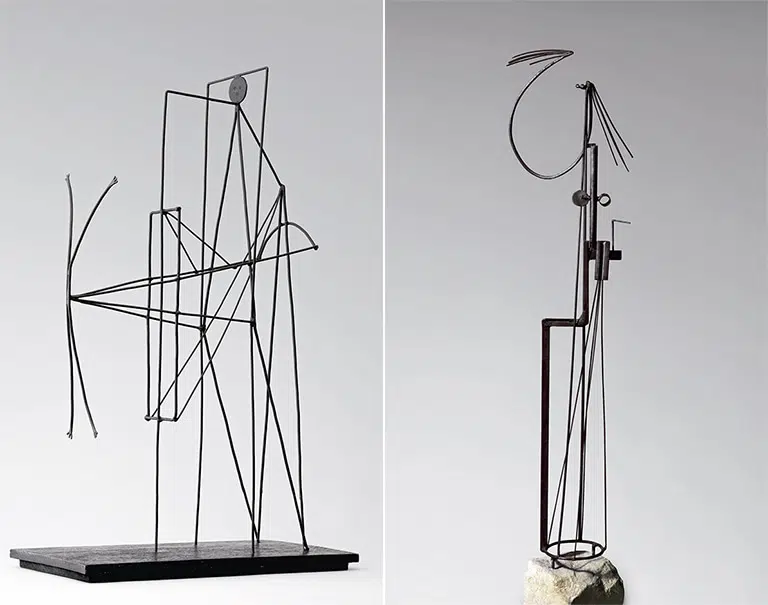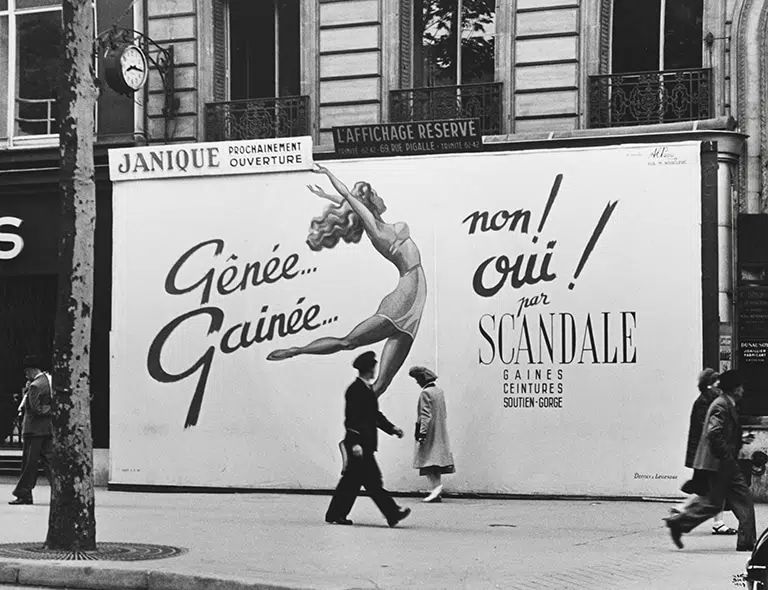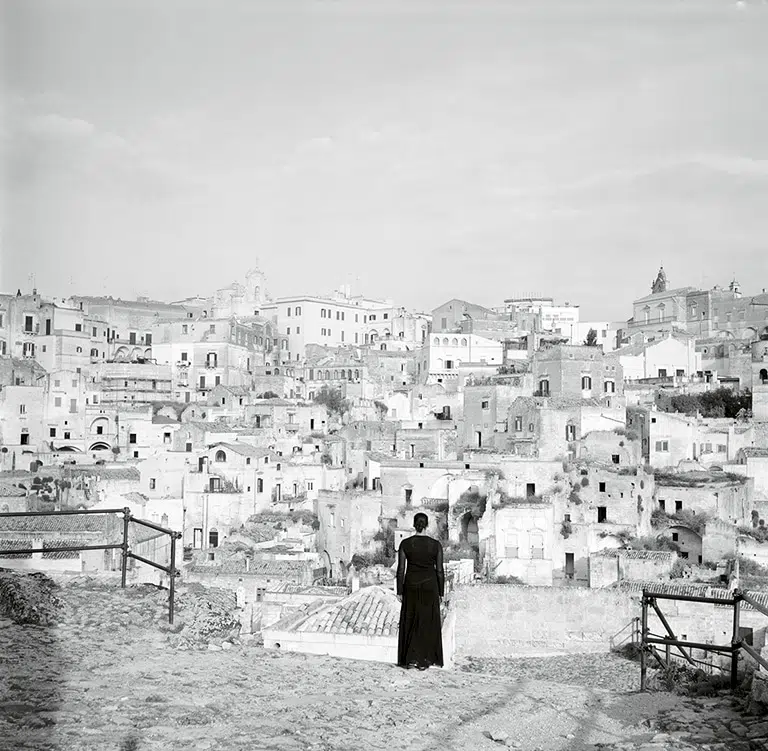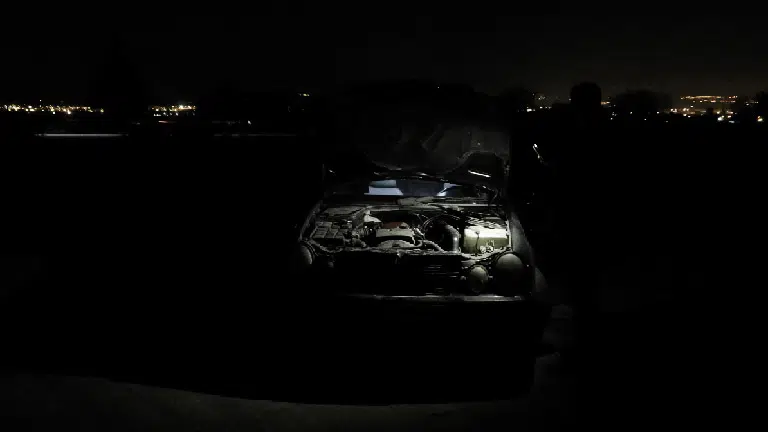Lion bondissant [Leaping Lion]
![Lion bondissant [León saltando] Lion bondissant [León saltando] © COLECCIONES Fundación MAPFRE](/media/arte-cultura/colecciones/oscar-dominguez/fm000274.jpg)
Óscar Domínguez
Lion bondissant [Leaping Lion], 1936
© Óscar Domínguez, VEGAP. Madrid, 2021
© Fundación MAPFRE COLLECTIONS
Author
Born:
San Cristóbal de La Laguna, Santa Cruz de Tenerife, 1906
Died:
Paris, 1957
1936, year 1930 – 1940
Entry date: 2000
Technique
Decalcomania/tempera on black paper
Dimensions
Paper size: 20.5 × 25 cm (8 1/16 × 9 13/16 in.)
Frame size: 53 x 57 x 4 cm
Inventory
FM000274
Description
In June 1936, André Breton published an article in the magazine Minotaure entitled ‘Decalcomania with no preconceived object’, in which he hailed this new technique as an invention of Óscar Domínguez. From then on, this would be regarded as his great contribution to surrealism, joining the other discoveries of this movement such as automatic writing, frottage, grattage, and the exquisite corpse. Domínguez created his first decalcomania for the cover of Eduardo Westerdahl’s book on Willi Baumeister, published by Gaceta de Arte in 1934, the same year that he first came into contact with the surrealist group in Paris. This procedure, similar to that of monotyping, consisted of applying a sheet covered in gouache onto another sheet, pressing down and then immediately peeling it off: the effect of the still-liquid gouache on the bottom sheet was enough to evoke rocks, corals, submarine flora and abysmal geological depths; in short, suggestions of shapes produced by random textures. Its historical precedents include the famous ‘stains on the walls’ mentioned by Leonardo da Vinci in his Treatise on Painting, William Blake’s Portrait of Newton, George Sand’s dendrites, the mysterious ink images of Victor Hugo, and Dr. Rorschach’s work. As a result, since the publication of Breton’s article in Minotaure, in which many other decals by other surrealist painters appeared, it is enough to mention the use of this technique by Max Ernst in oil paintings such as Europe After the Rain (1940-1942) and The Eye of Silence (1943-1944).
Lion bondissant (Leaping Lion) is from the collection of Marcel Jean, a surrealist painter whose studio Domínguez used to frequent in 1936 and with whom that same year he created a series of decalcomanias, adding templates and vignettes to the original technique. This introduced a corrective factor to the randomness, which is why these works were described as being ‘automatic decalcomania with premeditated interpretation’. Domínguez focused on the motif of a lion; Marcel Jean on a window. The two were combined in a series of sixteen variations, including pieces done individually by one or the other artist, and some by both, which they called grisou (firedamp), after the flammable gas found in coal mines.
Domínguez’s choice of the theme of a lion – which might have been related to Dalí’s flying lion – and its association with a mechanical technique such as decalcomania had, to a certain extent, been predicted by Breton himself, who on the night of 6/7 May had dreamt that he was watching the artist in his studio while he was painting: “on the canvas, there are currently six knots. Looking at them closely, I realized that each of these knots was actually the hindquarters of a lion […]. [Domínguez] must have found a mechanical procedure to execute his lion-trees, a procedure that eliminates all effort and allows him, in part, to easily obtain the desired intensity.” (Accomplissement onirique et genese d’un tableau animé, in André Breton, Trajectoire d’un rêve, Paris, 1938, pages 53-59).
Breton never managed to write the preface to Grisou, as he had announced, and it would be Marcel Jean who would do so when Jean Luc Mercié, the second owner of Lion bondissant, completed the publication in Paris in 1990. In keeping with the original plan, this publication reproduced the sixteen selected plates in collotype in a limited print run of twenty-five copies, along with the original monotypes.
[María Dolores Jiménez-Blanco]
ALIX, Josefina, et al., Éxodo hacia el sur: Óscar Domínguez y el automatismo absoluto 1938-1942, cat. exp. Santa Cruz de Tenerife, Organismo Autónomo de Museos y Centro del Cabildo Insular de Tenerife, Obra Social y Cultural de la Caja General de Ahorros de Canarias, 2006.
CASTRO, Fernando, Óscar Domínguez y el surrealismo, Madrid, Cátedra, 1978.
FERNÁNDEZ MOLINA, Antonio, Óscar Domínguez (1906-1957), cat. exp. Madrid, Galería Guillermo de Osma, 2000.
GUIGON, Emmanuel, y MERCIE, Jean-Luc, Sueños de tinta: Óscar Domínguez y la decalcomanía del deseo, cat. exp. Las Palmas de Gran Canaria, Centro Atlántico de Arte Moderno, 1993.
Óscar Domínguez 1906-1957. Decalcomanías, cat. exp. Madrid, Galería Guillermo de Osma, 2006.
Óscar Domínguez: el surrealismo volcánico, cat. exp. París, Instituto Cervantes de París, 2006.
Óscar Domínguez: fuego de estrellas, cat. exp. Málaga, Fundación Pablo Ruiz Picasso, 2009.
Óscar Domínguez surrealista, cat. exp. Madrid, Fundación Telefónica, 2001.
SERRANO, Véronique (comisaria), La part du jeu et du rêve: Óscar Domínguez et le surréalisme, 1906-1957, cat. exp. Paris, Marsella Hazan, Musée Cantini, 2005.
SOSA, Rodolfo de, Óscar Domínguez: l’oeuvre peint. Catalogue raisonné. Euroarte, 1989.
Sueños de tinta. Óscar Domínguez y la decalcomanía del deseo, cat. exp. Las Palmas de Gran Canaria, Centro Atlántico de Arte Moderno, 1993.
VÁZQUEZ DE PARGA, Ana; GUIGON, Emmanuel; PALENZUELA, Nilo, Óscar Domínguez: 1926 antológica 1957, cat. exp. Madrid, Las Palmas, Santa Cruz de Tenerife, Museo Nacional Centro de Arte Reina Sofía, Cabildo Insular, Gobierno de Canarias, 1996.
WESTERDAHL, Eduardo, Óscar Domínguez. Barcelona, Gustavo Gili, 1968.




